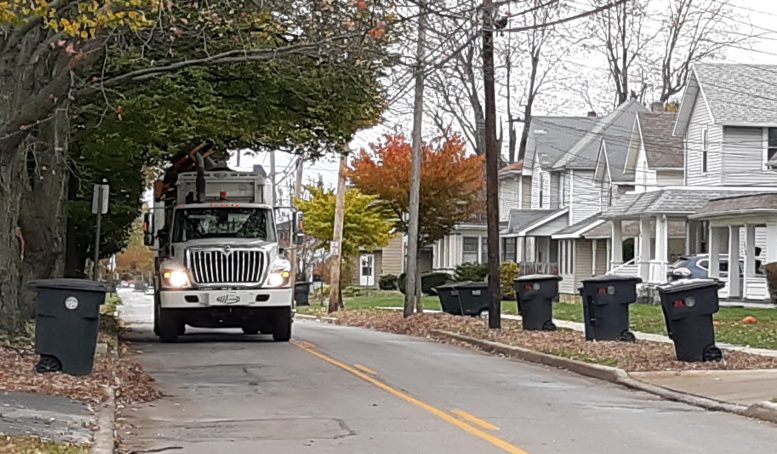By JAN LARSON McLAUGHLIN
BG Independent News
The city’s plan to increase the garbage and recycling fee by $2 a month in 2020 was met with some trash talk by Bowling Green council members Monday evening.
A review of next year’s city budget included a recommendation to hike the fee to $15 a month to make up for a shortfall forecasted for next year.
Members of City Council’s finance committee expressed their concerns about the rate hike.
“I came into this meeting hoping we had found a way to roll it back,” Greg Robinette said of the $2 increase. The city refers to the money charged as a fee. “But it is a tax,” he added.
It’s time for City Council to ask some hard questions about Bowling Green’s recycling program, Robinette said. “How much is too much to pay for recycling?” he asked.
The skyrocketing costs of providing recycling and the nosediving revenues need to be discussed by council, Robinette said.
The $2 increase per household will raise an additional $133,000 a year.
“I am not comfortable adding the $2 to do that. I’m not sold on it,” Robinette said. “I’ve got to believe we can find a way to raise that $133,000 without an increase.”
Council President Mike Aspacher agreed that recycling needs to be the focus of an in-depth discussion.
“I think that we have to have a fairly comprehensive community conversation about how we deal with recycling,” he said.
Aspacher said he supports the $2 increase if recycling is thoroughly discussed and an effective recycling program is operated.
“The markets have changed,” he said, expressing concern about the destination of items collected for recycling in Bowling Green.
“Much of what we are collecting at the curb is going directly to the landfill,” Aspacher speculated, since the markets have disappeared for some recyclables.
But Aspacher didn’t want to give up on recycling.
“I don’t think we can abandon our recycling efforts without analyzing it first,” he said.
Mayor Dick Edwards shared the concerns.
“I think the questions you are raising about recycling are reasonable – but painful,” Edwards said. “The market has changed dramatically.”
Several years ago, the city enacted the $13 trash and recyclable fee when the city was coming out of the Great Recession.
“As the income tax started to recover, the general fund wasn’t going up,” Municipal Administrator Lori Tretter explained.
Aspacher also pointed out that the initial $13 fee helped fill the $800,000 hole in the city’s budget that was created when the state cut the Local Government Fund.
“It’s very difficult to recommend any increases to you,” Tretter told council’s finance committee. But the city’s general fund must be balanced.
“When things turn south, it’s important you have a fund balance,” she said.
Earlier this fall, city officials reported the recycling services that Bowling Green citizens have come to expect are at risk of being trashed unless the city subsidizes the program more or finds a less expensive provider.
A combination of market changes, declining newspaper products, and China’s refusal to buy American recyclables is creating an upheaval in recycling programs nationwide.
“We have a very long history with this,” Tretter said about the Bowling Green Recycling Center during a meeting of City Council’s Committee of the Whole.
“When the system was different, you made money from recyclables,” Tretter said. “It’s a very different story now.”
Citizens of Bowling Green have always been supportive of recycling. Last year 700 tons of recyclables were collected curbside, and another 1,000 tons were left at the drop-off location. So that makes it difficult to put the discussion in terms of dollars and cents, Tretter said.
But officials at the recycling center have told city officials that they cannot keep operating the facility at the current annual rate from the city.
“The markets are as low as they’ve ever been,” said Ken Rieman, chairman of the Bowling Green Recycling Center. “I haven’t seen it this bad in 40 years.”
That has resulted in the center facing a loss of $10,000 to $12,000 a month, Rieman said.
“We’re operating on reserves,” he said. “I don’t see it going back to the model where materials pay their way to market.”

